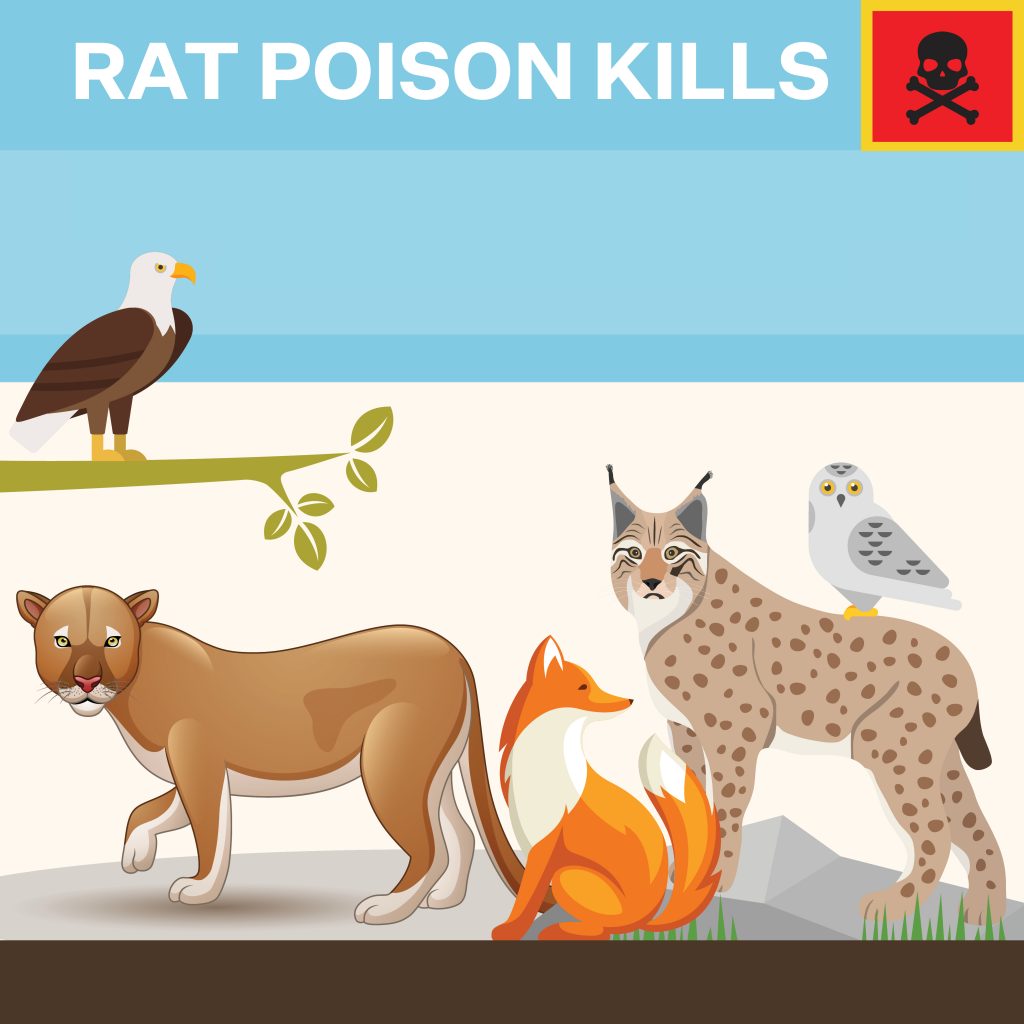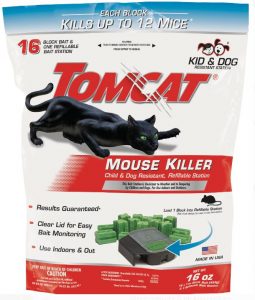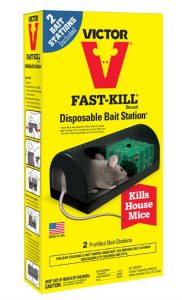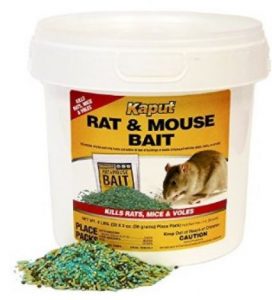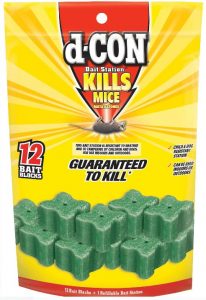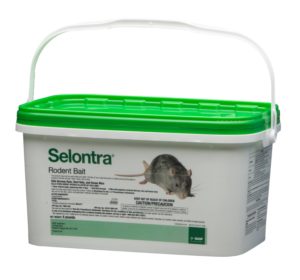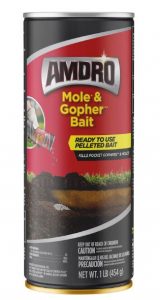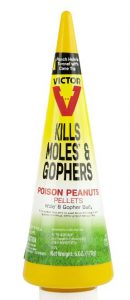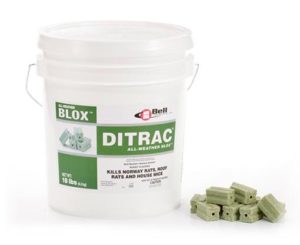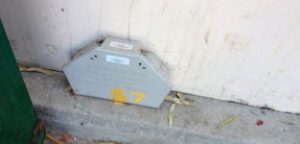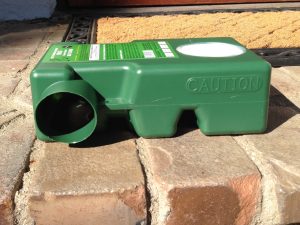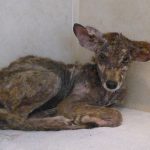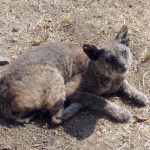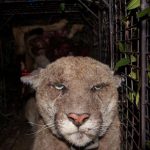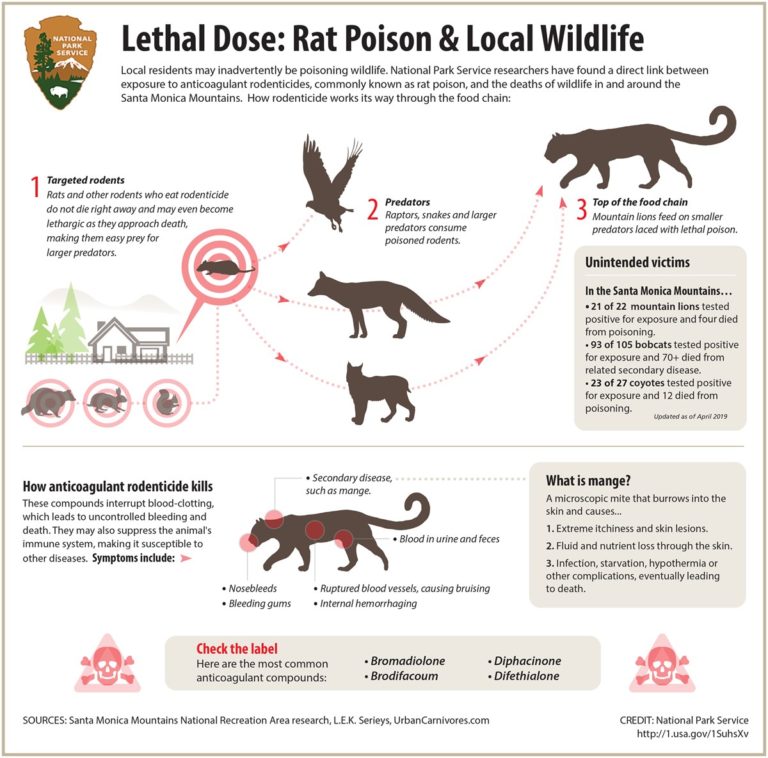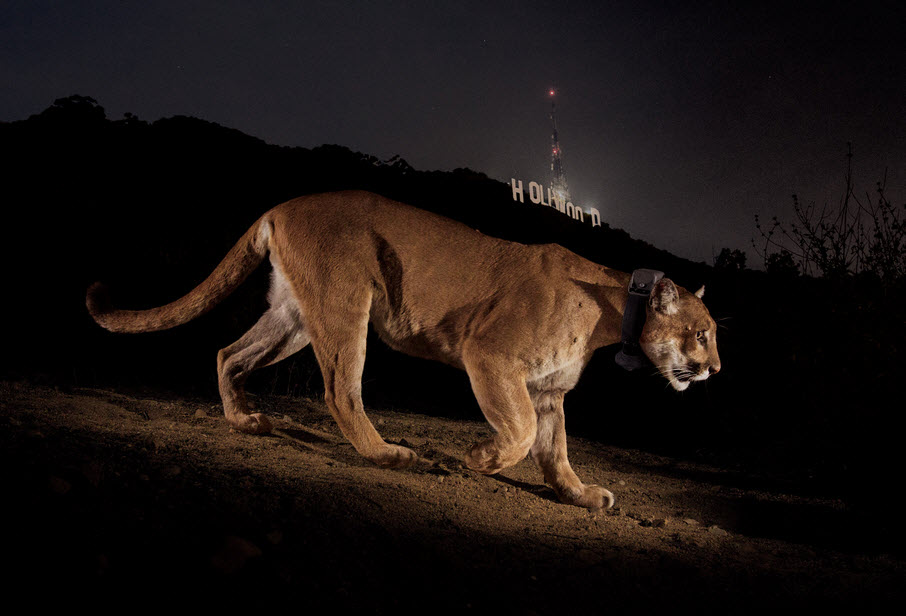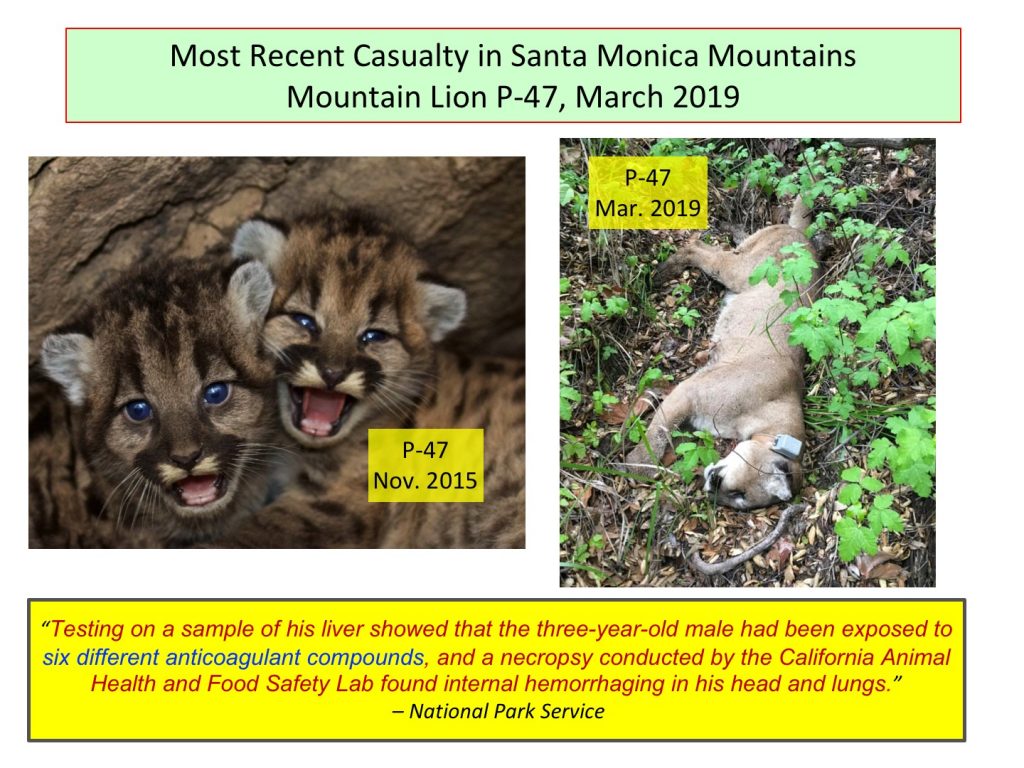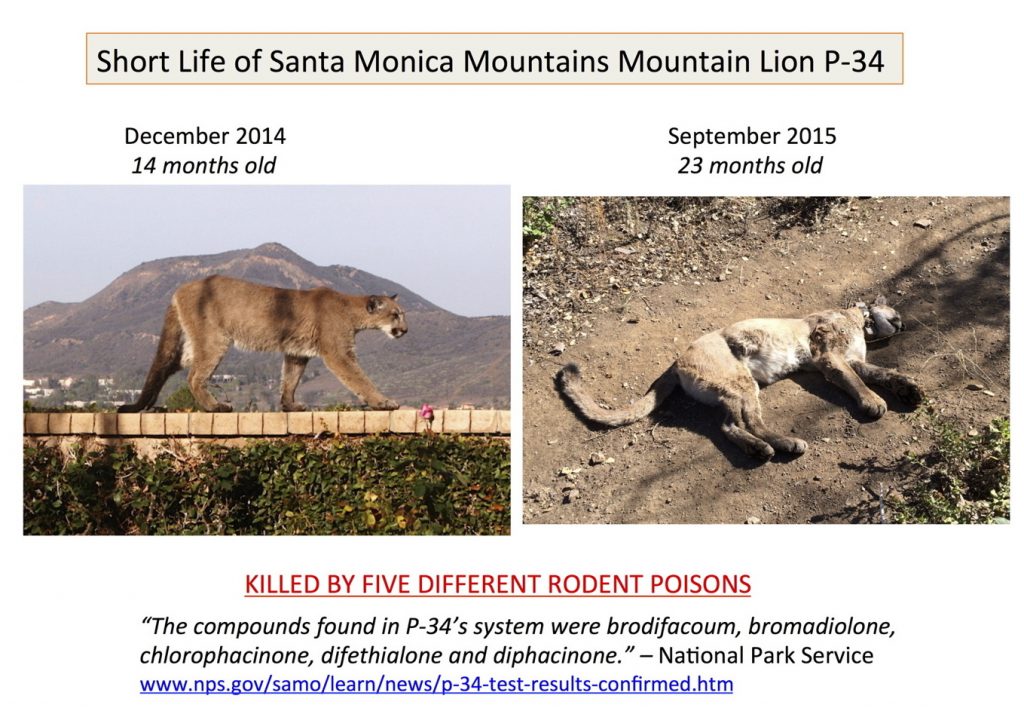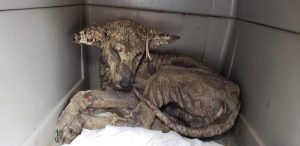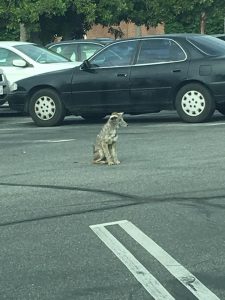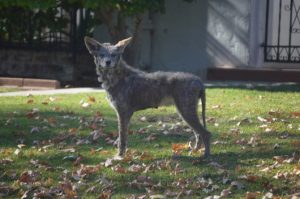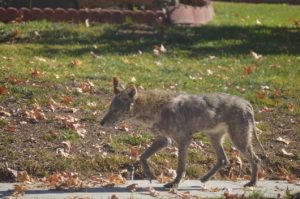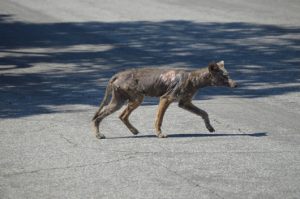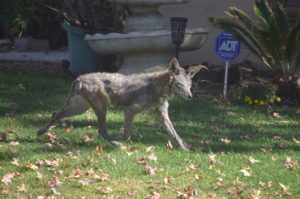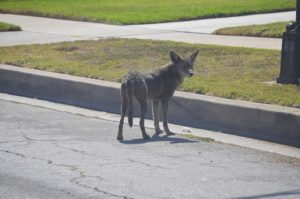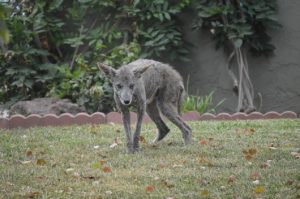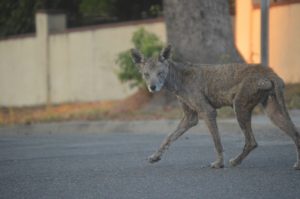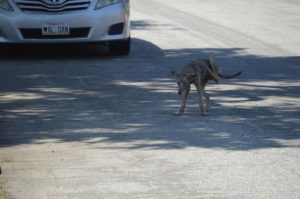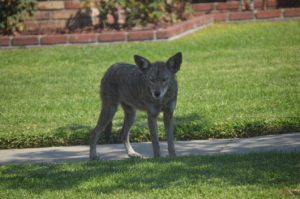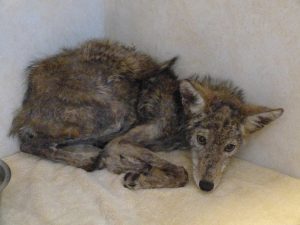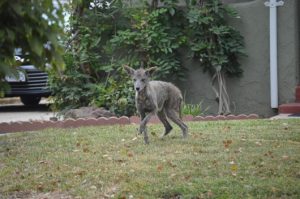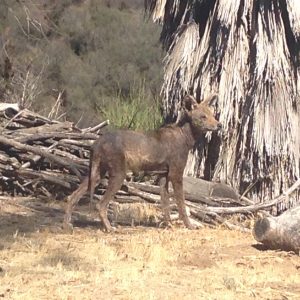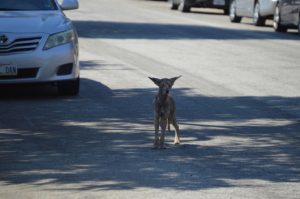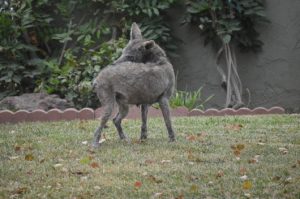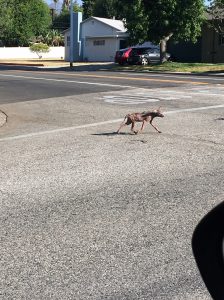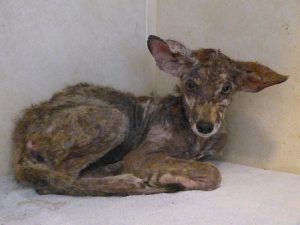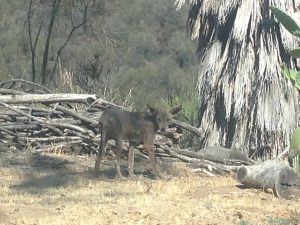RODENT POISON THREAT TO WILDLIFE PETS & CHILDREN
Break the Poison Chain
Modern supertoxic rodent poisons are spreading throughout our ecosystems causing massive exposure, disease, and death beyond the intended targets. Current studies have proven that there are no safe poisons that can be used around wildlife, pets, and children. It is imperative that we do our part to stop the use of poisons to control rodents and to prevent these poisons from killing other species that feed on them and risking the lives of our children and pets.
Learn how you can help to break the poison chain through science-based policy reform:
Regulating Rodenticides
Questions & Answers
We’ve learned a lot through our various campaigns to restrict rodent poisons and provide answers to frequently asked questions.
Why Can’t Any City or County Control the Use of Rodent Poisons?
We get asked this all the time. This article explains how agriculture and pest control industries put through a law preventing localities from regulating pesticides. It all started when Mendocino County tried to protect their children from being sprayed with herbicides. The agriculture and pest control industries fought Mendocino County all the way to the California Supreme Court and they LOST! So then their lobbyists went to the California Legislature and devised a new law, called “Preemption” passed to take away the ability of local jurisdictions to control pesticides! Banning any pesticide, therefore, requires legally challenging Preemption.
Can My Community Ban Rodent Poisons?
No! We must successfully lobby to have Preemption overturned. We were delighted in September 2018 that the League of California Cities, the lobbying group for all the cities in California, passed a resolution proposed by the City of Malibu to reverse Preemption as it pertains to anticoagulant rodent poisons! It was just one of two Resolutions passed at its annual meeting. You can read the full resolution here.
What is the Legal Status of Rodent Poisons in California?
State Assemblyman Richard Bloom successfully put into law AB 2657 signed by the Governor on September 19, 2014. It bans the use of 2nd generation anticoagulant rodent poisons on state wildlife habitat areas, meaning state parks, wildlife refuges, and conservancies.
Restricting rodent poisons in California is work in progress and since the 2014 ban, the poisoning of non-target wildlife has not abated despite the fact that 2nd gen products were no longer available to purchase in stores.
Our first attempt to strengthen rodenticide regulation in 2017 was California Assembly Bill AB 2596, which had the support of a coalition of 57 conservation, public-health, research and wildlife-rehabilitation groups, the city of Malibu, Marin County, the mayor of Richmond and more than 45,000 people.
This was followed in 2018 by AB 2422. It can be found here – AB 2422. It passed one Assembly committee. We have learned from this experience and are now working with a stronger team including professional lobbyists.
IN AUGUST 2020, YOU HAVE A CHANCE TO VOICE YOUR SUPPORT FOR AB 1788!
Where Can I Find Summary Documents?
1) California Department of Pesticide Regulation on their new rules to ban consumer use of 2nd generation anticoagulant rodent poisons. This is the BEST SINGLE SUMMARY and review of the latest data on the damage to wildlife in California.
2) These are two long technical reports from a scientific panel reporting to the US Environmental Protection Agency. There is a lot of information not found easily elsewhere. In particular they discuss several different kinds of rodent poisons, including first generation anticoagulants, second generation, and non-anticoagulants such as bromethalin and strychnine.
EPA-HQ-OPP-2011-0718-0086
SAP EPA response-2013-0049-0002
3) Slides from November 2012 presentation by Stella McMillin of the California Department of Fish & Wildlife Wildlife Investigations Laboratory – “Anticoagulant Rodenticides: Secondary Poisoning of Wildlife in California“
TYPES OF RODENT POISONS - NEVER USE THESE POISONS
Rodenticides do not alway just kill directly. They can weaken the animal to the extent that they cannot do what’s necessary to survive, like hunting or negotiating road crossings.
Anticoagulants
There are two categories of anticoagulants. LOOK AT THE PRODUCT
LABEL to determine the type of poison.
A. Second generation. Products that have any of the following active
ingredients are in this category:
Brodifacoum
Bromadiolone
Difethialone
Difenacoum
These are the most advanced, and dangerous, poisons. They are
banned for consumer use in the United States, but are VERY
commonly used by the professional pest control companies.
B. First generation. Most common active ingredients are
Diphacinone
Chlorophacinone
Warfarin
These are less potent, BUT – 1st Generation Anticoagulant
Rodenticides are not the solution! 2nd generation anticoagulants get
most of the bad publicity, but recent research suggests that 1st
generation anticoagulants are no better.
Here is a slide we made summarizing the evidence concerning 1st generation anticoagulants featuring Griffith Park mountain lion P-22, who was rescued from being poisoned by diphacinone.
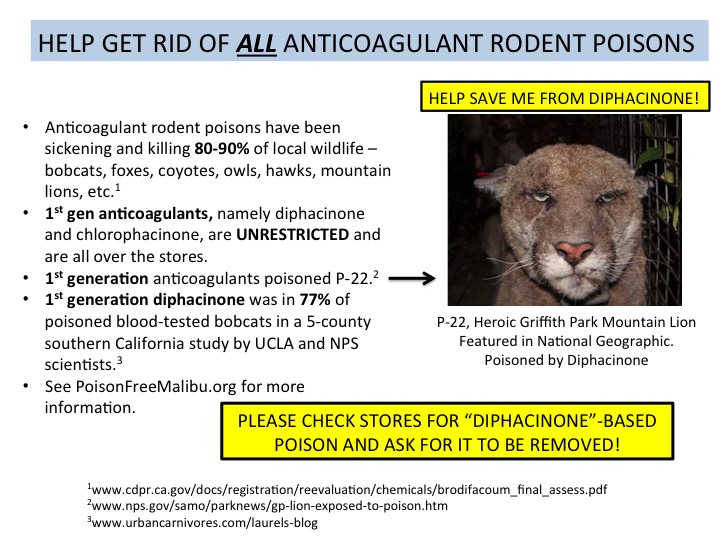
Non-Anticoagulants
CLICK HERE TO LEARN ABOUT THE NON-ANTICOAGULANTS
Cholecalciferol (vitamin D3), Bromethalin, Strychnine, Zinc Phosphide, and Aluminum Phosphide (Fumitoxin).
They are increasing in use as the anticoagulants are becoming in disfavor.
HOWEVER, the non-anticoagulants are extremely dangerous and HAVE NO ANTIDOTES!
Rodenticide Ingredients and Typical Product Names
ANTICOAGULANTS
Diphacinone: Ditrac, Liqua-Tox II, Wilco Ground Squirrel Bait, D-Con Bait Station
Difethialone: First Strike
Bromadiolone: Maki Mini Block, Contrac Block
Brodifacoum: WeatherBlok XT
NON-ANTICOAGULANTS
Bromethalin: Fastrac
Cholecalciferol, Vitamin D3: Terad3, Selontra
Strychnine: Wilco Gopher Getter
Zinc Phosphide: Amdro Molep-0,&Gopher Bait, Victor Poison Peanuts, Moletox
Aluminum Phosphide: Fumitoxin
RatX
People have been asking about the product RAT X.
Here is some information.
Even though it is made of natural ingredients it is poisonous to animals who cannot vomit.
This includes mice, rats, squirrels, prairie dogs, chipmunks, chinchillas, porcupines, beavers, guinea pigs, hamsters, gerbils and capybaras.
It also affects animals such as rabbits, hares, and pikas. Also, horses!
It is placed out in open trays, throw packages, and bait boxes.
After ingesting, dehydration commences causing blood thickening and circulatory collapse, whereby rodents become lethargic, collapse into a coma and die. Death occurs within 4 to 7 days with regular feeding intakes.
It is unknown how many actually retreat to their burrows.
Here is an FAQ found at the website of a company that sells it:
Q: Can you guarantee that RatX will do no harm to all wild animals and birds, including birds of prey?
What testing have you done on your product?
A: The manufacturer of Rat X states that they cannot guarantee that it will not harm other animals if they consume it.
Here is the Material Safety Data Sheet:
http://www.ratxproducts.com/RatXBooklet.pdf
It lists several safety hazards – see items 1 through 16. In section 16, it says that this product is an industrial-strength compound and it should be kept away from children. This contradicts the statement on an information pamphlet provided that says “No Risk to Children or Pets.”
The MSDS further states that this product is “intended for use by buyers having necessary industrial skill and knowledge” and “always wear standard industrial eyeglasses for normal use.”
Contrapest by Senestech
Contrapest is a product that reduces fertility in rats. The company Senestech is very open about the fact that Contrapest does not work by itself.
Standard rat poisons are recommended to be used in conjunction with ContraPest.
See at Senestech – “ContraPest® liquid Rat Birth Control® work in tandem with traditional pest control methods.”

“FERTILITY CONTROL” highlighted in yellow is the role of the Contrapest product.
This product is new and has questionable UNKNOWN long-term ramifications for the food web and the environment.
Rodent poisons as well as experimental chemicals are not a good idea.
There are many problems that can emerge.
The Safety Data Sheet is at labelsds.com/images/user_uploads/ContraPest%20SDS%203-25-21.pdf
See Section 11 – TOXICOLOGICAL INFORMATION and Section 12 ECOLOGICAL INFORMATION.
Note all the “No data available” entries for multiple hazards.
This is dangerous ground with unknown implications.
Here is information from the required product label – labelsds.com/images/user_uploads/Contrapest%20Label%203-10-22.pdf:
“Note to Physician or Veterinarian: This product has been formulated for fertility control in rats.
It may possibly induce transient infertility in small male and female mammals capable of reproduction.”
There is NO magic solution in a bait box that will solve rodent issues.
The solution will always be removing food, water and shelter and sealing buildings.
Here is an analysis blog posting Evaluating Claims About Contrapest.
Instead, please see our website on Repel, Exclude and Deter!
Bait Boxes
ESSENTIAL!
Dumpsters and other trash containers MUST BE CLOSED AND LOCKED so that the food supply does not BREED RODENTS! See our section on dumpsters here.
Next to open dumpsters and around buildings you may find multiple bait boxes that dispense rodent poison. Property owners in general are not aware of the problem and may not even know the bait boxes are there! Here are steps to increase awareness.
Beware! A pest control company will tell you a fear story as to why you should have poison bait boxes outside of your home. Rats DO NOT die inside the poison bait boxes, they freely go out and poison other wildlife and pets. Repelling, excluding, and deterring is the solution for your home, not poisoning the environment outside.
Here is a YouTube video explaining the poison bait box business profit model.
Poison bait boxes come in different colors and shapes: look out for them at houses and businesses.
We Thank These Businesses
Our educational campaign resulted in Malibu merchants removing all rodent poison products from their shelves. There had been six – Ralphs, CVS Pharmacy, Pavilions, Malibu Hardware, A&B Plumbing, and Malibu Ranch Market. Ralphs, RiteAid, and Albertsons in Calabasas; and Agoura Feed and Roadside Lumber in Agoura Hills have also enthusiastically removed their poison products. We would also very much like to recognize the following local Malibu businesses that do not use poisons, but instead use careful sanitation practices. Please patronize and thank them! We also have noticed that businesses that do not clean up their garbage still have rodent problems no matter how much poison they use to try to solve them.
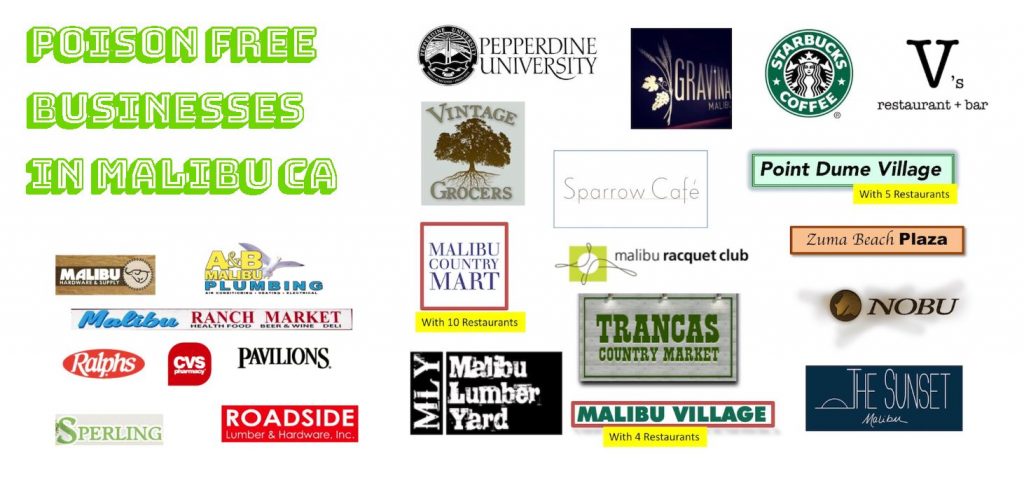
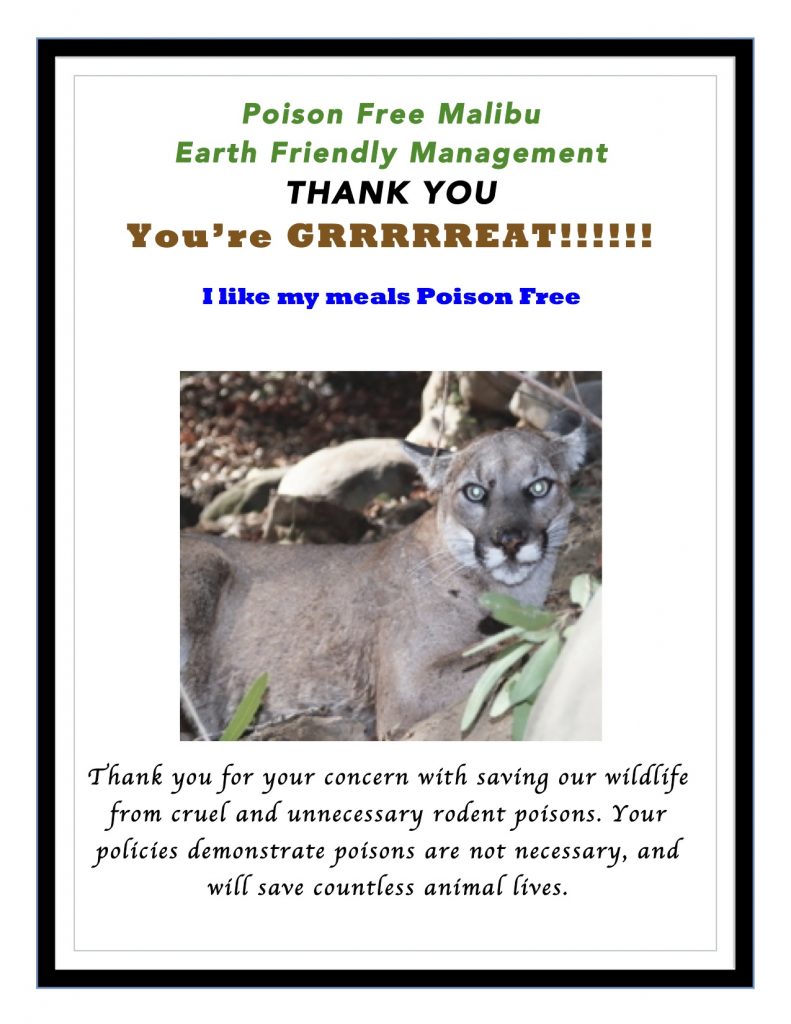
PROPER DISPOSAL
Rodent poisons CANNOT go into ordinary trash pickup, or even some of the “hazardous household waste” events in many cities. They must be taken to special Collection Centers at specific days and times. In Los Angeles City and County, these Centers can be found here. Information on where to bring hazardous waste in Ventura County can be found here. Please check which Centers accept rodent poison by calling the indicated phone numbers.
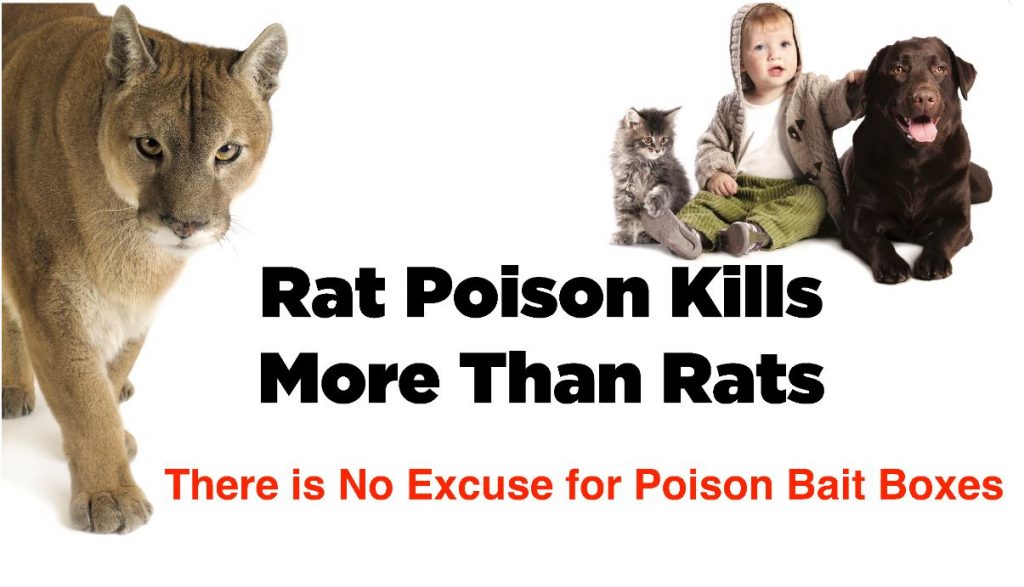
Threats to Children and Pets
Approximately 10,000 children a year are accidentally exposed to mouse and rat baits, as graphically described in this Scientific American article. Ten rodent poisons have been identified by the US EPA as being particularly dangerous – Brodifacoum, Bromadiolone, Bromethalin, Chlorophacinone, Cholecalciferol, Difenacoum, Difethialone, Diphacinone, Warfarin, and Zinc Phosphide. They are specifically referenced in the US EPA document “Risk Mitigation Decision for Ten Rodenticides, May 28, 2008 (revised June 24, 2008)”. These and all other rodent poisons should be abandoned for rodent control in California.
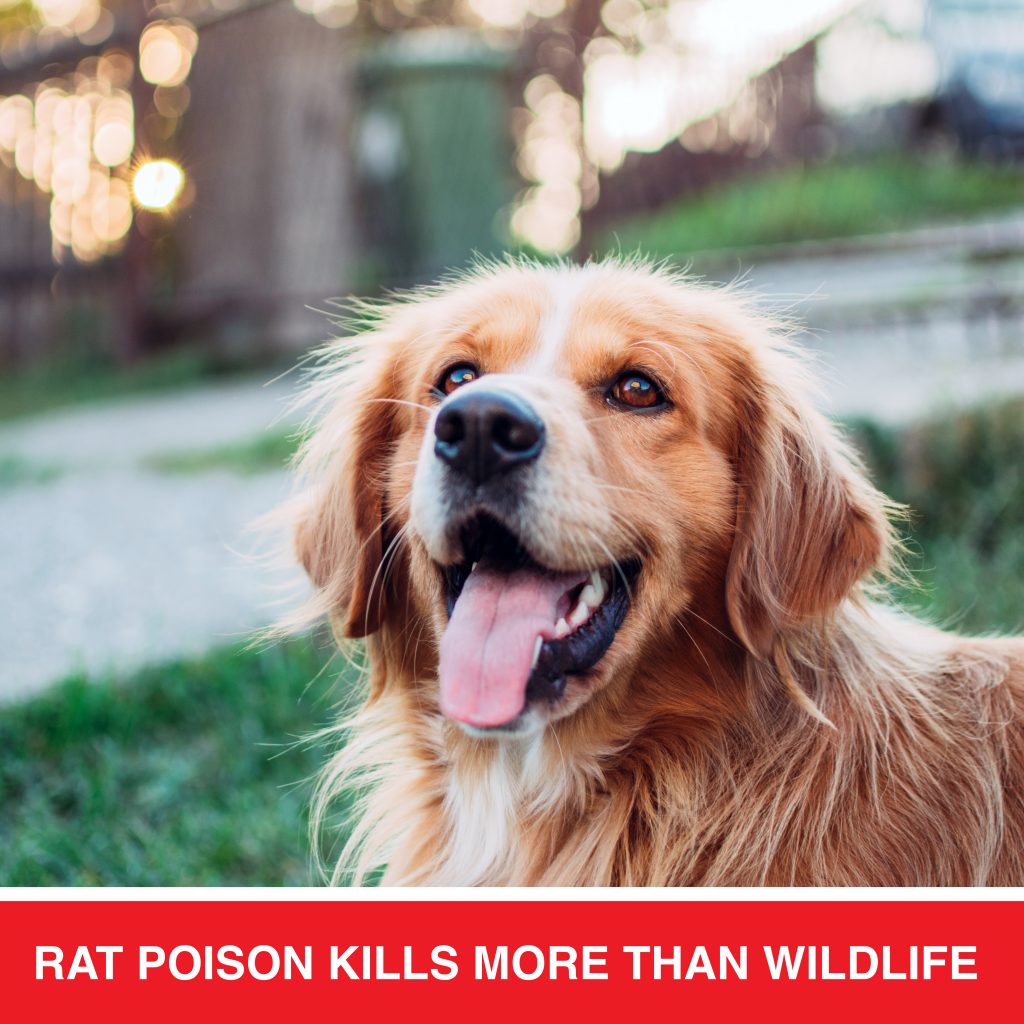
- The American Society for the Prevention of Cruelty to Animals reports that in 2019 they received over 15,700 calls about pets who had accidentally ingested rat and mouse poisons. This is an increase from 7,000 in 2009.
- Rodenticides top poison control calls in 25 states
- 10 Most Common Ways Dogs Are Accidentally Poisone
- Rat Poisoning in Dogs
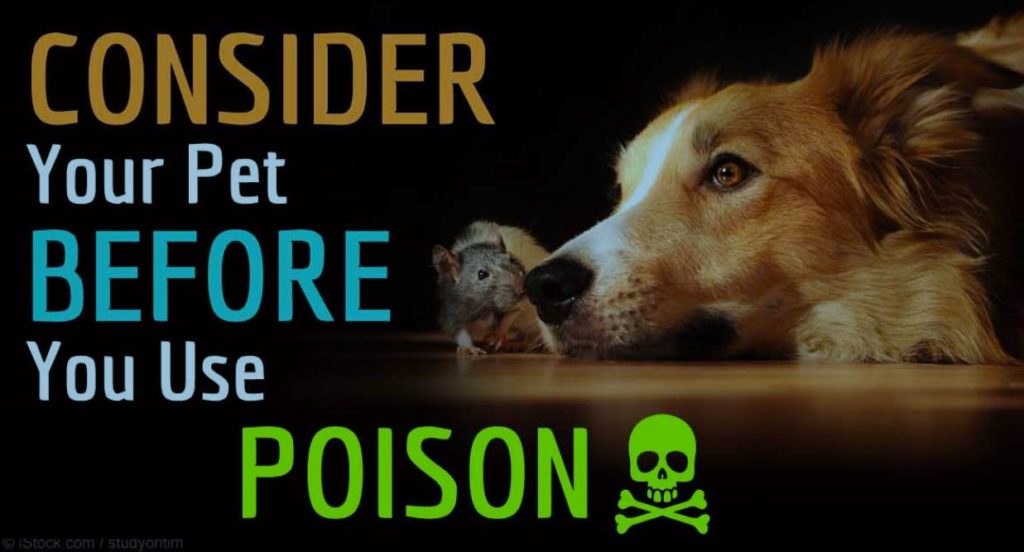
POISONED WILDLIFE
Wildlife Poisoning Statistics
Three major studies:
- Of 104 mountain lions tested California-wide from 2005 to 2011, 82 contained rodent poisons, with 78% containing more than one kind.
252 mountain lions were tested for poisons from 2016 to 2018 in 37 California counties. 95.6% of their livers had exposure to one or more poisons.
72% to 3 or more poisons. - Of 28 mountain lions found in eight California counties that were tested between 1997 and 2011, 100% tested positive for at least one of the 2nd generation rodent poisons, 96% tested positive for brodifacoum, 93% tested positive for bromadiolone, 39% tested positive for difethialone and 61% tested positive for the 1st generation rodent poisons diphacinone.
Note that this 1st generation anticoagulant is doing tremendous harm also, not just the more restricted 2nd generation anticoagulants. - 14 out of 14 mountain lions tested by the California Department of Fish and Wildlife in 2012 had rodent poisons [3].
- In addition –
- 2 Simi Valley mountain lions (P3 and P4) were documented to have died directly from rodent poison exposure.
- October 2012 a young female mountain lion (P-25) was found dead by hikers with rodent poisons in her system in Point Mugu State Park, Malibu.
- September 2015 P-34 died in Point Mugu State Park, Malibu, from five different anticoagulant poisons.
- October 2017 P-41 in the Verdugo Hills was found dead with six different anticoagulant poisons.
- January 2020 P-76 showed exposure to five compounds (brodifacoum, bromadiolone, chlorophacinone, difethialone, and diphacinone), which include first- and second-generation poisons.
- July 2020 P-67 died of multiple causes weakened by rodenticides and orphaning two kittens.
- December 2020 P-78 died with other causes contributing to their deaths, but BOTH these last two had five anticoagulant rodenticides PLUS the NON-ANTICOAGULANT bromethalin, crippling them from dealing with the challenges of living in the wild next to humanity.
- On June 14, 2023 the report on what killed P-22, the famous Griffith Park mountain lion, came out revealing that in addition to his injuries, there were both anticoagulants and bromethalin in his system.
- 83% of coyotes in the Santa Monica Mountains were exposed to rodent poisons [4].
- 92% of bobcats tested in the Los Angeles area have been exposed to rodent poisons [5].
- The complete loss of bobcats from many open space areas in the Conejo Valley due to increased vulnerability to the deadly disease mange, caused by exposure to rodent poisons [5].
- Survival rate (percentage that live from one year to the next) plunged from 77% to a low of 23% in 2004. The reduced population’s survival rate has recovered somewhat to 58% [5].
- In a study of 195 bobcat blood samples in five southern California counties, the 1st generation anticoagulant diphacinone was found in 77% of the bobcats in which anticoagulants were detected. This emphasizes that the 1st generation anticoagulants are also doing tremendous harm, not just the more widely restricted 2nd generation poisons.
- A Department of Fish and Wildlife study stated “as of 2010, 92% of raptors (owls and hawks) collected in San Diego County and 79% collected in the Central Valley contained anticoagulant rodenticides” [8].
74% of 68 foxes sampled of this endangered variety studied near Bakersfield, California were exposed to anticoagulant poisons [12]. This subspecies is listed as Federal Endangered and California Threatened, primarily due to profound habitat loss and degradation throughout its range.
- 85% found exposed to rodent poisons of 101 studied for exposure [9]. Fishers are cat-sized weasel-type carnivores that live in the rugged portions of the southern Sierra Nevada and are candidates for listing under the Endangered Species Act.
1) California Department of Pesticide Regulation on their new rules to ban consumer use of 2nd generation anticoagulant rodent poisons. This is the BEST SINGLE SUMMARY and review of the latest data on the damage to wildlife in California.
2) These are two long technical reports from a scientific panel reporting to the US Environmental Protection Agency. There is a lot of information not found easily elsewhere. In particular they discuss several different kinds of rodent poisons, including first generation anticoagulants, second generation, and non-anticoagulants such as bromethalin and strychnine.
EPA-HQ-OPP-2011-0718-0086
SAP EPA response-2013-0049-0002
3) Slides from November 2012 presentation by Stella McMillin of the California Department of Fish & Wildlife Wildlife Investigations Laboratory – “Anticoagulant Rodenticides: Secondary Poisoning of Wildlife in California“
4) Coyotes. Gehrt SD, Riley SPD. In book Urban Carnivores edited by SD Gehrt, SPD Riley, BL Cypher. Baltimore, MD: The Johns Hopkins University Press. pp. 79-95 (2010).
5) Bobcats.
a) L. E. K. Serieys, T. C. Armenta, J. G. Moriarty, E. E. Boydston, L. M. Lyren, R. H. Poppenga, K.R.Crooks, R.K.Wayne, S.P.D.Riley, “Anticoagulant rodenticides in urban bobcats: exposure, risk factors and potential effects based on a 16-year study,” Ecotoxicology (2015) 24:844–862. (This is a link to the abstract. Email poisonfreemalibu@gmail.com if you would like the full article.)
b) Riley SPD, Boydston EE, Crooks KR, Lyre, LM. In book Urban Carnivores edited by SD Gehrt, SPD Riley, BL Cypher. Baltimore, MD: The Johns Hopkins University Press. pp. 121-138 (2010).
c) Riley, SPD, et al, “Anticoagulant Exposure and Notoedric Mange in Bobcats and Mountain Lions in Urban Southern California,” Journal of Wildlife Management, 71(6):1874-1884 (2007).
d) Laurel E.K. Serieys, Matthew S. Rogan, Stephani S. Matsushima, Christopher C. Wilmers, “Road-crossings, vegetative cover, land use and poisons interact to influence corridor effectiveness,” Biological Conservation 253 (2021) 108930.
6) Mountain Lions.
a) J. Rudd, et al, Proceedings of the 28th Vertebrate Pest Conference, Rohnert Park, CA, February 2018.
b) Table 4, page 11 of June 27, 2013 memorandum from Deborah Daniels, Senior Environmental Scientist to Ann Prichard, Chief, Pesticide Registration Branch, both of the California Department of Pesticide Regulation.
7) Owls and Hawks (Raptors). Lima, L. L., and Salmon, T. P. “Assessing some potential environmental impacts from agricultural anticoagulant uses.” Proceedings of the Vertebrate Pest Conference 24:199–203 (2010).
8) Fishers.
a) Gabriel, M.W., et al, “Patterns of Natural and Human-Caused Mortality Factors of a Rare Forest Carnivore, the Fisher in California“, Public Library of Science One, 0140640, #11, Vol. 10, November 2015.
b) Gabriel, M. W., et al, “Anticoagulant Rodenticides on our Public and Community Lands: Spatial Distribution of Exposure and Poisoning of a Rare Forest Carnivore.” Public Library of Science One, 0040163, #7, Vol. 7, July 2012.
9) “Potential Risks of Nine Rodenticides to Birds and Nontarget Mammals: A Comparative Approach,” William Erickson and Douglas Urban, US Environmental Protection Agency, July 2004. This 230 page report is an often cited classic in the field.
10) The Center for Biological Diversity is a national leader protecting the environment, including legal action. This is a detailed summary of their argument to the California Department of Pesticide Regulation – www.biologicaldiversity.org/campaigns/pesticides_reduction/pdfs/2012-12_Rodenticide_comments_to_DPR.pdf
11) Cypher, B.L., McMillin, S.C. , Westall, T.L., Van Horn Job, C., Hosea, R.C. Finlayson, B.J. and Kelly, E.C., “Rodenticide Exposure Among Endangered Kit Foxes Relative to Habitat Use in an Urban Landscape. “Cities and the Environment 7(1): Article 8 (2014).
Expert Testimonies
Ultimately, there is no poison that does not present a risk to wildlife, pets, and humans.
Presently, anticoagulant rodent poisons have been established as being the most damaging to wildlife but this is partially due to the popularity of their use driving scientific inquiry into their ecological impacts.
We know less about how other types of rodent poisons affect wildlife because it is still an active area of research.
What we do know is that a rodent dying from rodent poisoning is easy prey and that eating poisoned rodents causes their consumers to die slow and agonizing deaths from internal bleeding or an inability to recover from infectious diseases such as mange when rodenticide poisoning suppresses immunity.
Dr. Laurel Serieys and Dr. Seth Riley are carnivore ecologists studying rodenticide impacts on predators on the urban-wildland interface in southern California. Please explore the resources below to familiarize yourself with current research.

First Generation Anticoagulant Poisons are the MOST FREQUENTLY Found Poisons
"I tested 195 bobcat blood samples for exposure to anticoagulants. 39% of animals were exposed, and diphacinone (a first-generation anticoagulant) was the most frequently detected compound. In 77% of blood samples of the 39% in which we detected exposure, diphacinone was detected. In terms of other first-generation compounds, we also detected chlorophacinone and coumachlor in the blood samples. Diphacinone was detected 3 times as frequently as as second-generation compounds. Given our findings, we concluded that diphacinone, a first-generation compound, is probably the most frequent compound that bobcats are exposed to across our study areas, which included a significant number of samples from Ventura, Los Angeles, and Orange Counties, but also some samples from Santa Barbara and San Diego Counties."
Also see Dr. Serieys’s summary of the devastating effects on bobcat immune response and genetics at The Surprising Effects of Rat Poison in Bobcats.
Dr. Seth Riley, National Park Service and UCLA Adjunct Professor presenting to the Simi Valley City Council, October 13, 2014
“P-22 was recaptured in late March by National Park Service biologists and treated for mange, a parasitic disease of the hair and skin. Blood tests later showed exposure to anti-coagulant rodenticides, commonly known as rat poison.”
P-22 captured before being poisoned by anticoagulants and contracting mange by wildlife photojournalist Steve Winter.
“When people put these bait traps outside their homes or businesses, they may not realize that the poison works its way up the food chain, becoming more lethal as the dose accumulates in larger animals.”
Dr. Seth Riley quoted in CBS Los Angeles in response to P-22’s recapture and medical treatment.
The National Park Service press release about P-22’s capture and treatment details how 1st generation anticoagulant rodent poisons were the culprit. 2nd generation anticoagulants are the only rodenticides banned for consumer use in California, but this is an indication that the 1st generation anticoagulants are also doing tremendous harm.
P-25 was found dead with rat poison in his system in Pt. Mugu State Park, Malibu, CA in 2012.

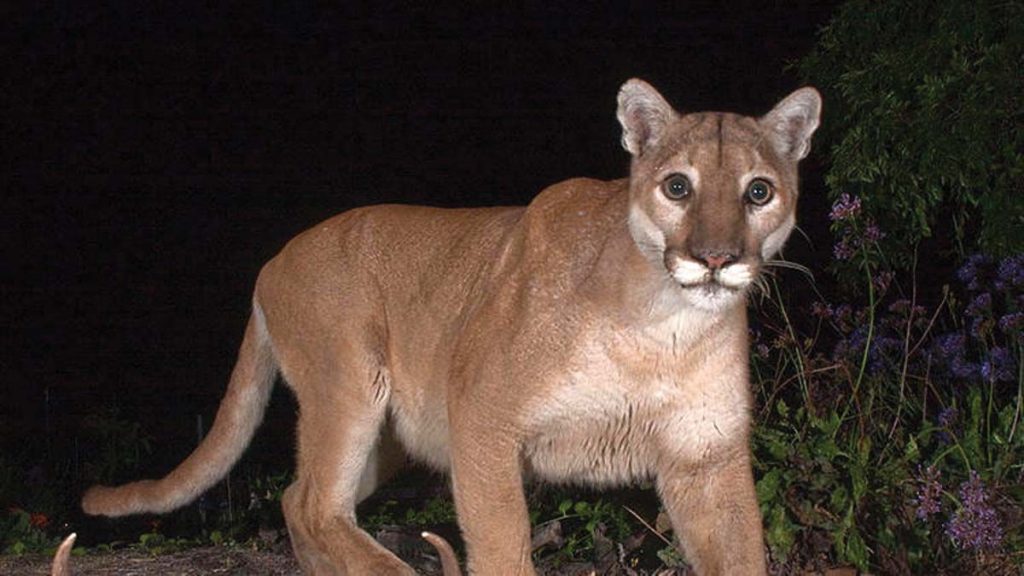
P-41’s thin body was found on Oct. 4, 2017 several days after a wildfire burned part of the Verdugo Mountains area where he had made his home. Six different compounds of anticoagulant rodenticides—rat poisons—were in his liver: brodifacoum, bromadiolone, chlorophacinone, difethialone, diphacinone and difenacoum.
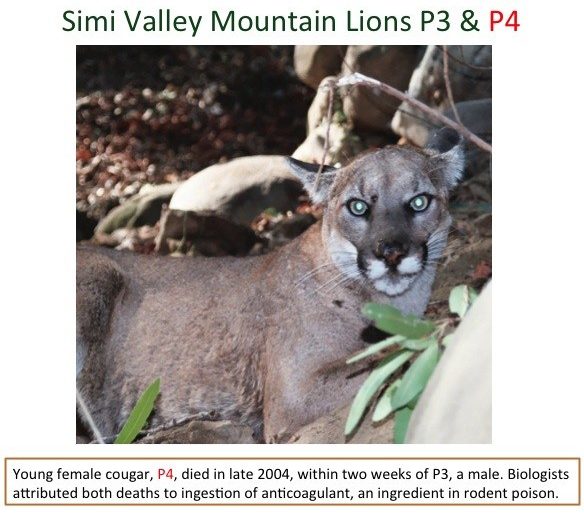
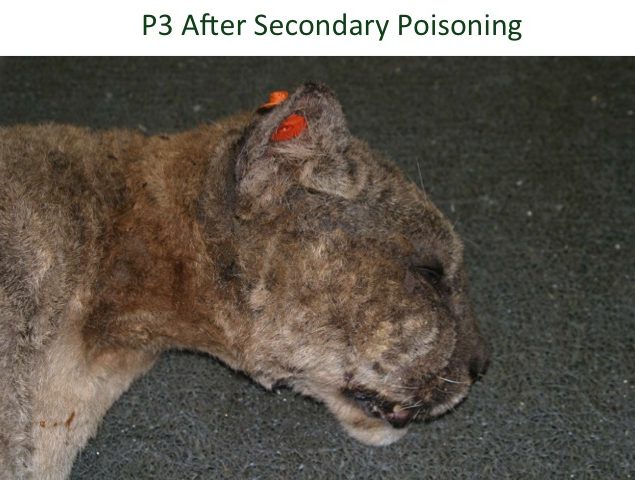
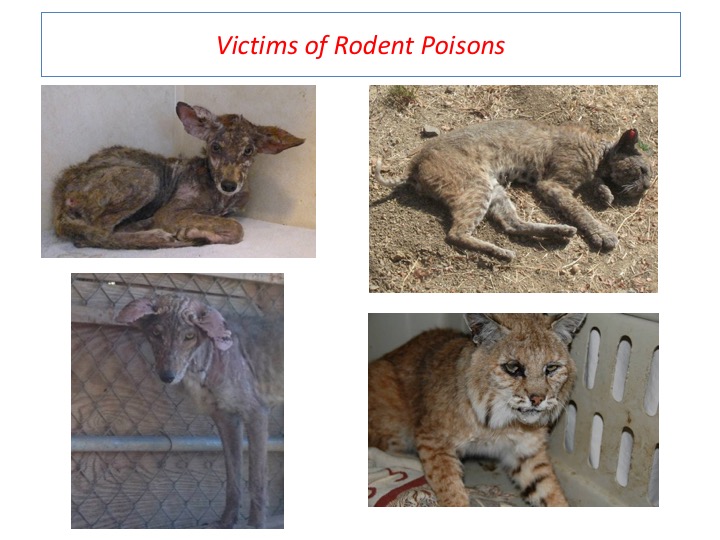
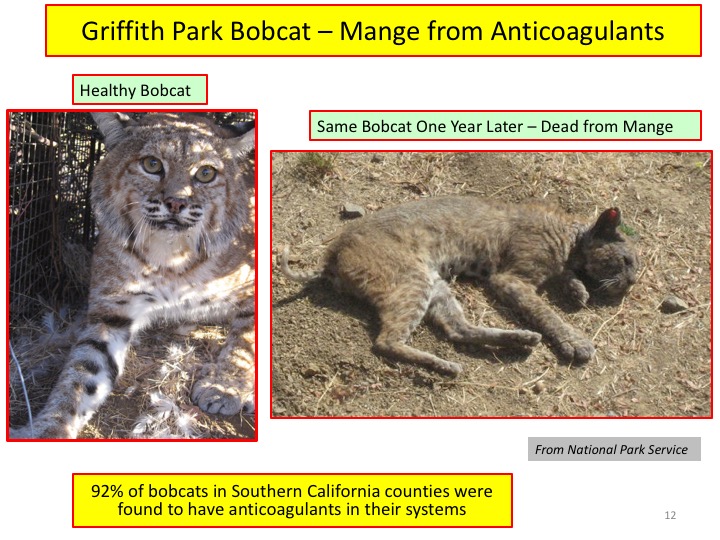
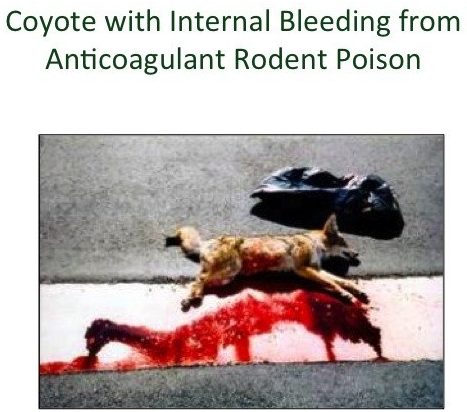
Coyotes with Severe Mange are Increasingly Common
Coyotes with severe mange symptoms brought on by ingesting rat poison pictured in Alhambra, Altadena, and Malibu, CA. Mangy coyotes are significantly more likely to be spotted during the day in neighborhoods than healthy wild coyotes who are more active at night around humans to avoid conflict. Never feed coyotes! For your and their safety, haze them to deter them from scouting for easy meals. Poisoning is a vicious cycle where weakened predators are then much less able to catch wild prey so they become more reliant on our waste and poisoned rodents.
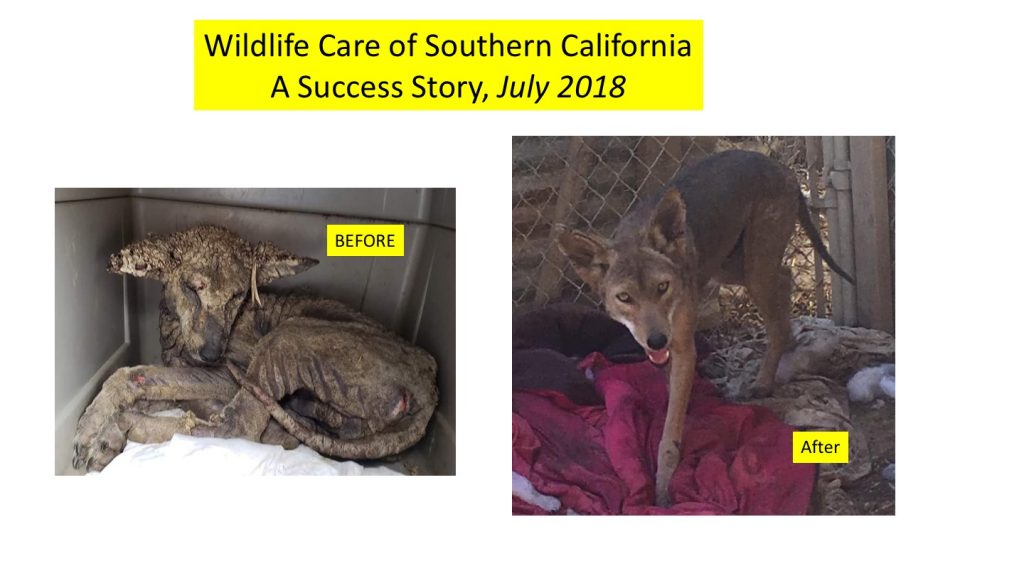
Rehabilitation from poisoning and mange is possible for some animals (pictured above) thanks to the dedication wildlife rescue organizations like Wildlife Care of Southern California, but is still costly and only a short-term solution. The only real long-term solution we have necessitates that we stop using poisons to stop poisoning the wildlife in our very own backyards!
Birds of Prey Are Being Preyed Upon by Rodenticides
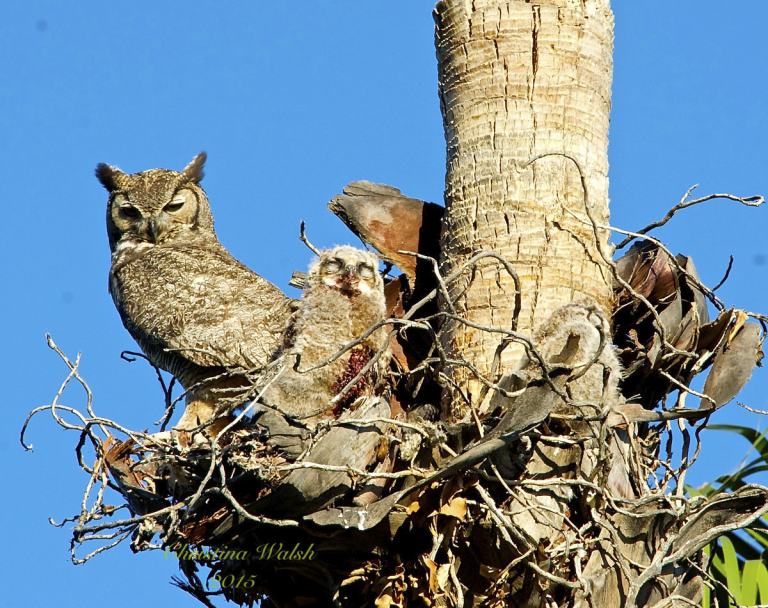
Great-horned owlets bleeding near Chatsworth Nature Preserve in Los Angeles, CA were found dead later that day. The parents were likely feeding their offspring easy-to-catch poisoned rodents.
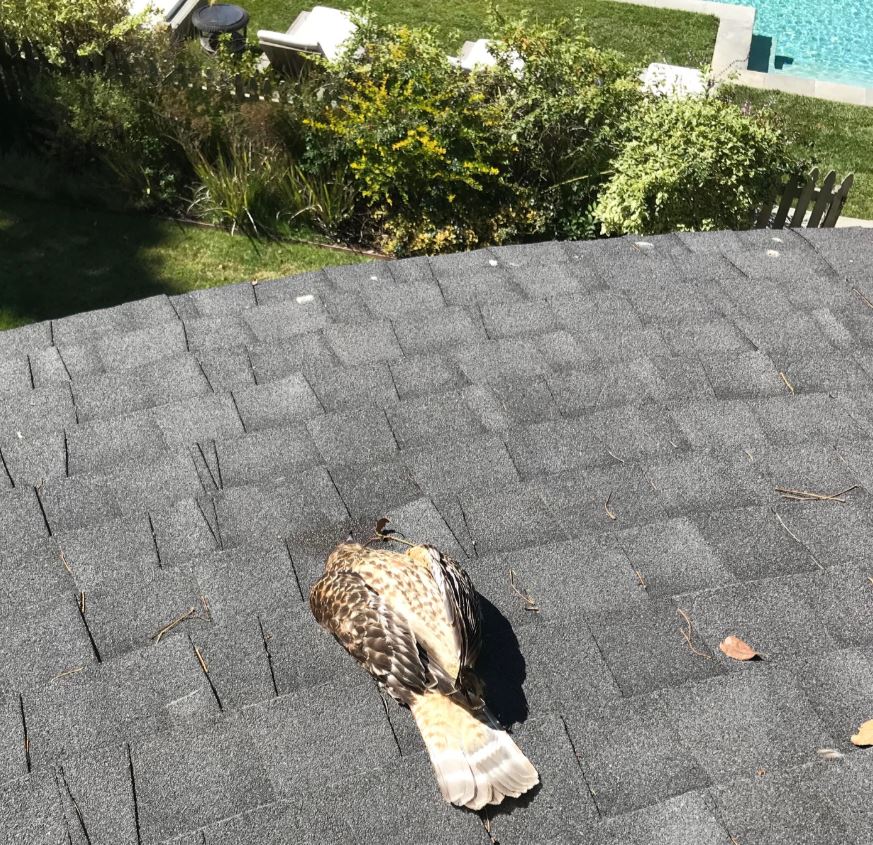
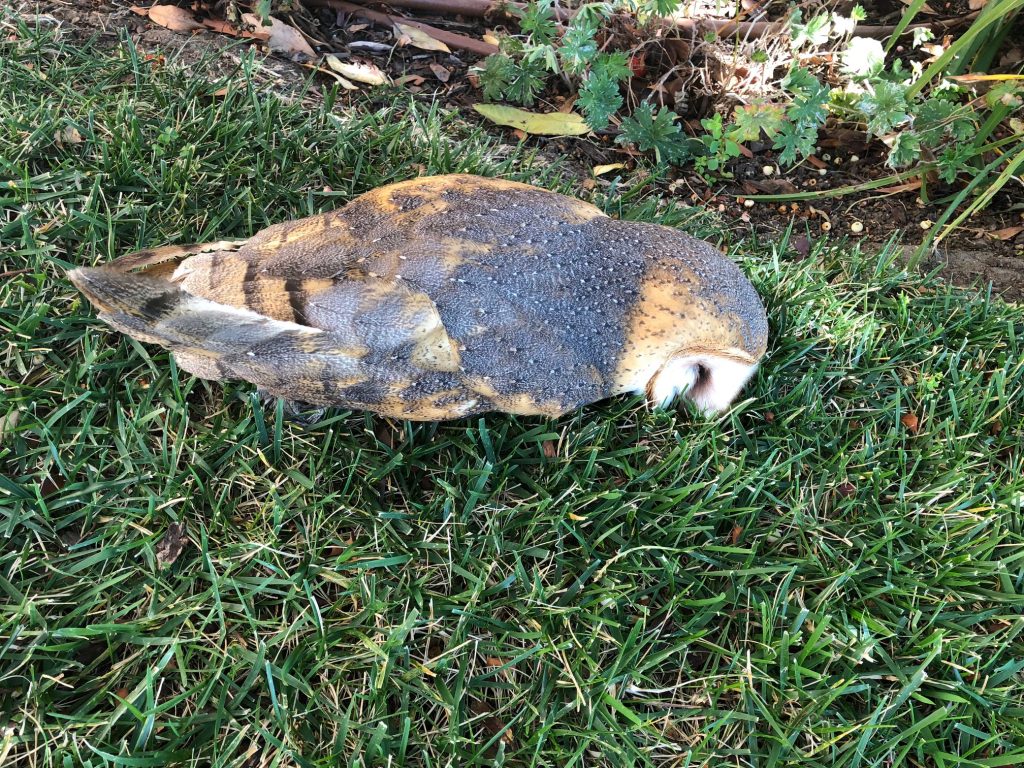
Poisoned hawk and owl found at different properties in Malibu.
“There is no good long-term reason for using any form of rodenticide. By controlling their populations through natural means, we can help preserve the natural ecosystem health of all wildlife that lives around us.”
Dr. Duane Tom, DVM Director of Animal Care, California Wildlife Center interviewed in Malibu Surfside News

